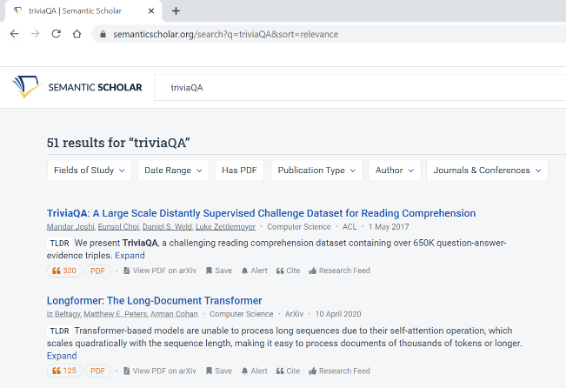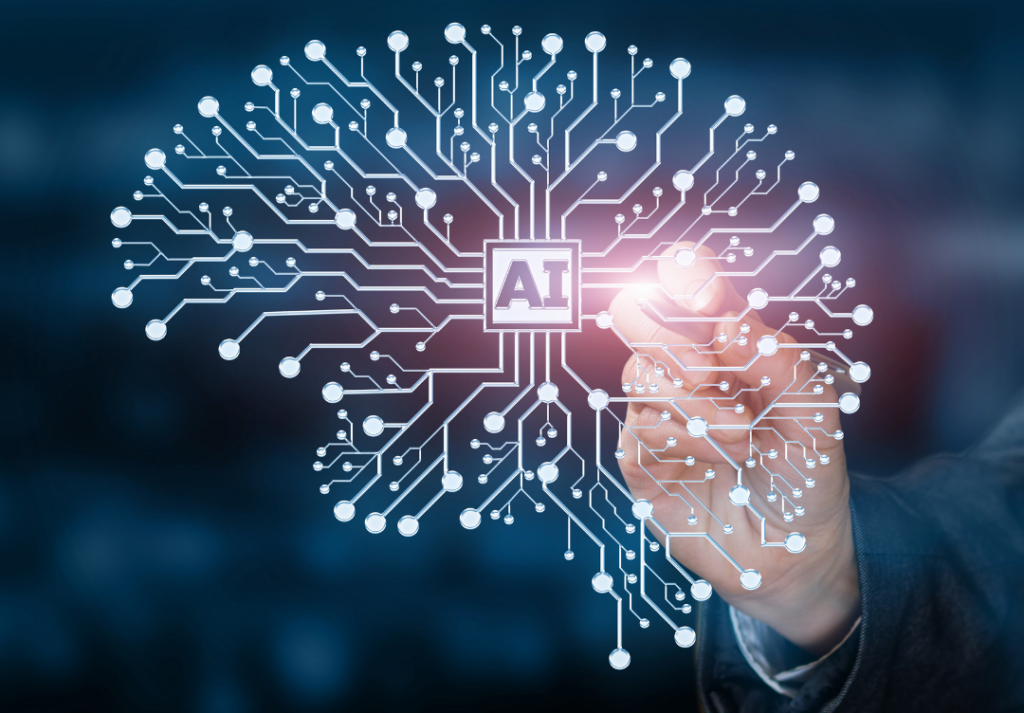The impact of AI on the labour market: is this time different?
A new OECD literature review summarises findings of the impact of AI on the labour market. Here are some of the main takeaways.
Good news for researchers – or is it?
In November 2020, Semantic Scholar introduced their new TL;DR (Too Long Didn’t Read) feature. This AI-powered tool condenses even the most complex computer science papers into a single-sentence summary, using natural language processing.
If you are a researcher, you may already be thinking about the time you could save by avoiding the gruelling task of mapping out evidence on a new topic. This new tool will finally allow you can shift your attention to the parts of your job that are more complex, analytical and social.
At the same time, you are probably a little concerned that it could replace you or one of your colleagues. The last time it took a team of four researchers to review the evidence. Will it only require three or fewer researchers in the future?

As with any technology that can perform the same tasks as humans, AI can either replace or complement their work. But in public debate, there seems to be a real fear surrounding the use of AI in the workplace. Why is this? Does AI threaten and undermine human value in the workplace more than any other technology? There have been significant advances in AI, but will their impact really be different this time?
A new report and lessons from the past
Ever since the Industrial Revolution, fear of technology-induced job loss has been a recurring theme in public debate. In the 1930s, John Maynard Keynes issued his own warning about “a new disease… namely, technological unemployment” that would deprive humans of their livelihoods.
Despite fears, the technological progress experienced in recent decades has not led to mass unemployment. In fact, employment in OECD countries has risen. Forthcoming OECD research finds no suggestion that automation leads to the overall contraction of employment. This is because the forces at play do not only destroy jobs, they also create and transform them. Still, with every new wave of AI technologies, people renew speculation about whether or not something will finally cause employment trends to diverge or even accelerate in the future.
Each AI technology could have its own effect on the workplace
The OECD defines AI as “A machine-based system that can, for a given set of human-defined objectives, make predictions, recommendations or decisions influencing real or virtual environments”. Over the past few years, the availability of big data, cloud computing and the associated computational and storage capacity have dramatically increased the power and impact of AI. So has accessibility to such technologies. Breakthroughs in “machine learning” technologies have made AI even more powerful.
AI comes in many different forms, and some are more obvious than others. In the workplace, AI could be embedded in chatbot software to perform natural language processing and generation. AI can be used to generate predictions that support decision-making or perform image and facial recognition. AI can also control the movements of a robot or a vehicle. With such a wide range of AI applications it is easy to see that workers will experience AI in many ways, each with the potential to generate consequences for the labour market.
Currently, the industries where workers are most likely to encounter AI are high tech, automotive and assembly, telecoms, transport and logistics, financial services and consumer packaged goods, retail and healthcare. Beyond large and established players in the technology sector, industry adoption of AI appears to be at an early stage. However, this could change as businesses experiment, reorganise processes and ultimately discover where and how AI adds value.
What sets AI apart from other technologies?
Three main features of AI could make its impact on the labour market different from that of other technologies.

1. AI is a General Purpose Technology
General Purpose Technology (GPT) is a label for technologies likely to have a significant impact on society and the workplace, due to their potential application in many occupations and sectors of the economy. They can also generate complementary innovations. Describing AI as a GPT puts it in the same league as computing, electrification and the steam engine.
The significance of this label is that it adds depth and scale to the challenges and the opportunities presented by AI to the labour market. If AI is experienced in every sector and occupation of the economy, the potential for AI-related job loss is greater, but so is the potential benefit for workers.

2. AI can perform some non-routine cognitive tasks
Until recently, automation has affected mostly routine and low-skilled tasks. For instance, the initial wave of industrial robots primarily affected manufacturing processes. However, AI’s problem solving, reasoning and perception capabilities mean that it can perform some non-routine cognitive tasks, e.g. summarising computer science research papers.
The result is that some high-skilled occupations such as radiologists, lab technicians, engineers, lawyers and actuaries are judged to be highly exposed to AI. If AI replaces workers, this could represent a threat to those who have been historically more sheltered from the impact of technological changes.
However, the evidence also suggests that these high-skilled workers potentially threatened by AI may also be more capable or better positioned to take advantage of the benefits that AI brings. In other words, they can use AI in a way that is complementary to their work, adapt more easily, and ultimately avoid any negative impacts. This raises another issue: if AI mostly complements high-skilled workers and mostly replaces low-skilled workers, AI could further increase income inequality.

3. AI brings new opportunities and challenges to the work environment
AI’s ability to collect and process large amounts of data may make it an attractive tool to support management decision-making, from monitoring worker productivity or communications, to assessing job candidates and organising training.
However, these AI applications also entail significant risks for the work environment. For example, managers may welcome a more data-driven approach to recruitment or retention but may find that they are introducing new biases or entrenching old ones. A lack of transparency and accountability around algorithmic predictions may make employees feel insecure. Extensive monitoring may increase work pressure and generate stress about productivity and about how managers interpret data.
Is this time different?
In light of these features, we should not assume that the impact of AI on the labour market will be the same as other technologies. However, we can learn one major lesson from the past.
We have already established the fact that previous technological waves did not provoke massive unemployment. Instead, they have led to transformations within the labour market and brought challenges that policymakers continue to grapple with. Workers may need to re-skill or up-skill. This will help them to adapt to new ways of organizing tasks and the emergence of new ones. New skills will enable them to face potential job loss and navigate transitions to new jobs. Policies and institutions can play a key role in ensuring that all workers can successfully navigate a changing labour market.
Even if AI increases the scale of the challenge, widens inequalities and brings new challenges for the work environment, policy makers should keep these lessons in mind to help workers ride the waves of technological change.
Read our new publication to find out more: The impact of Artificial Intelligence on the labour market: What do we know so far?

































